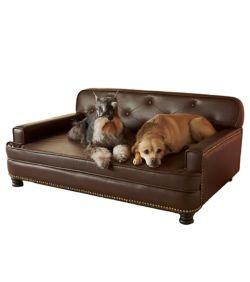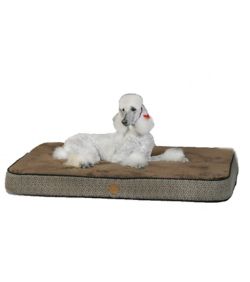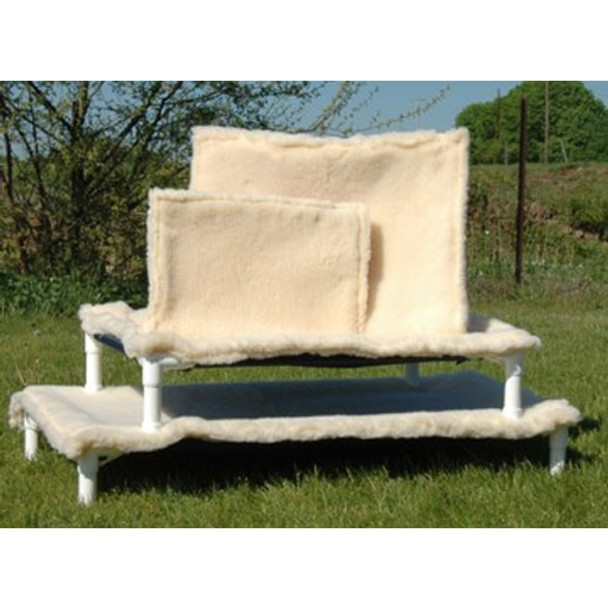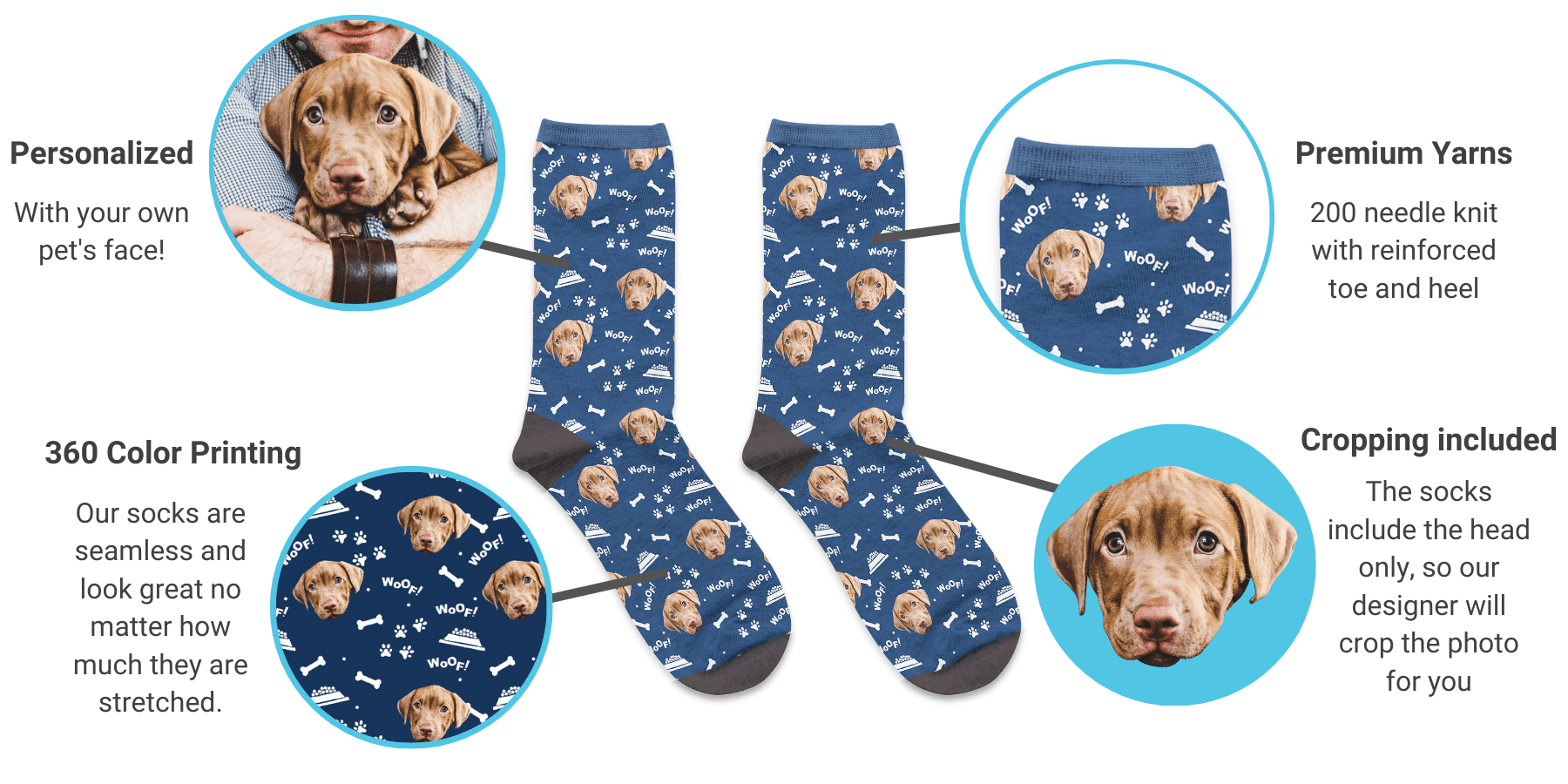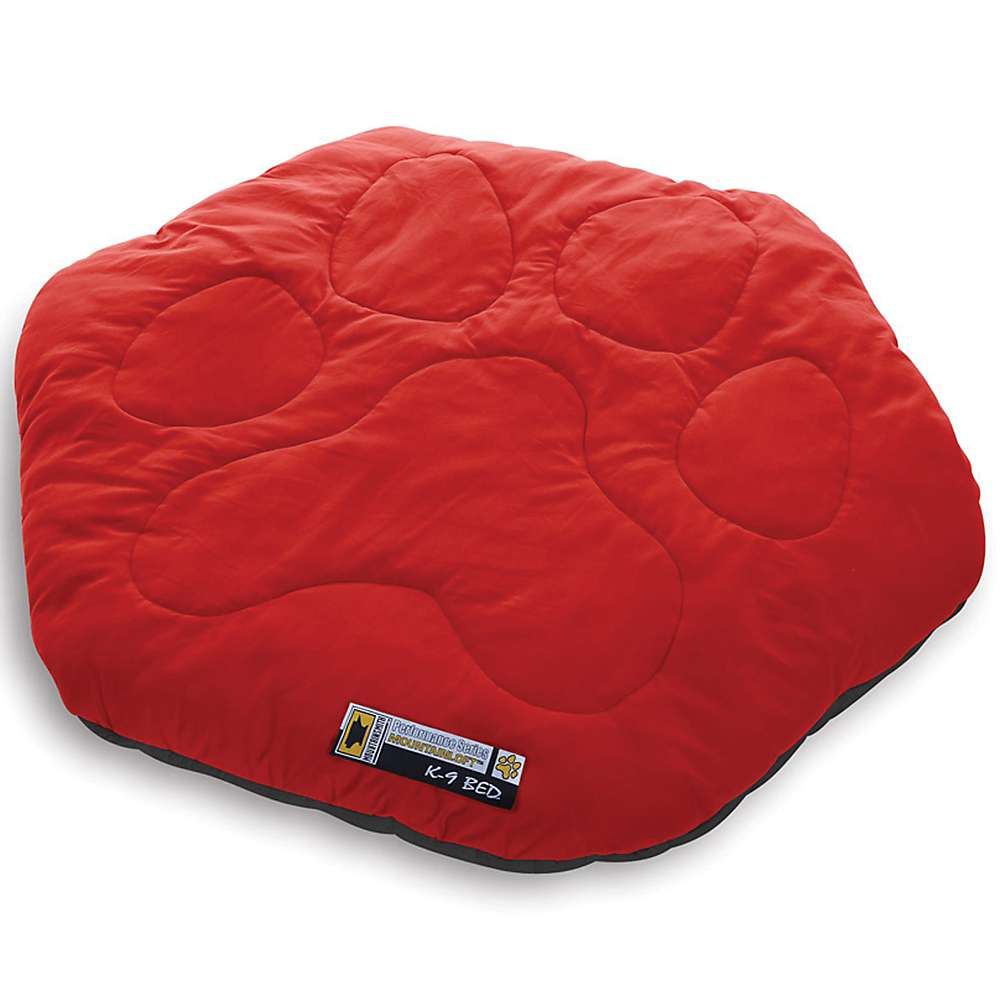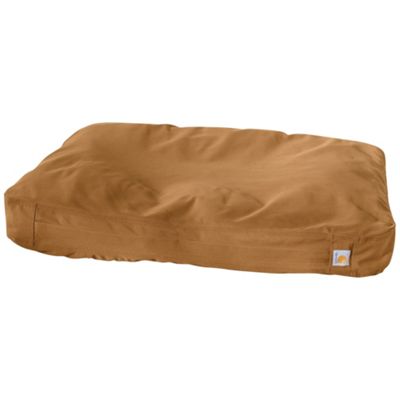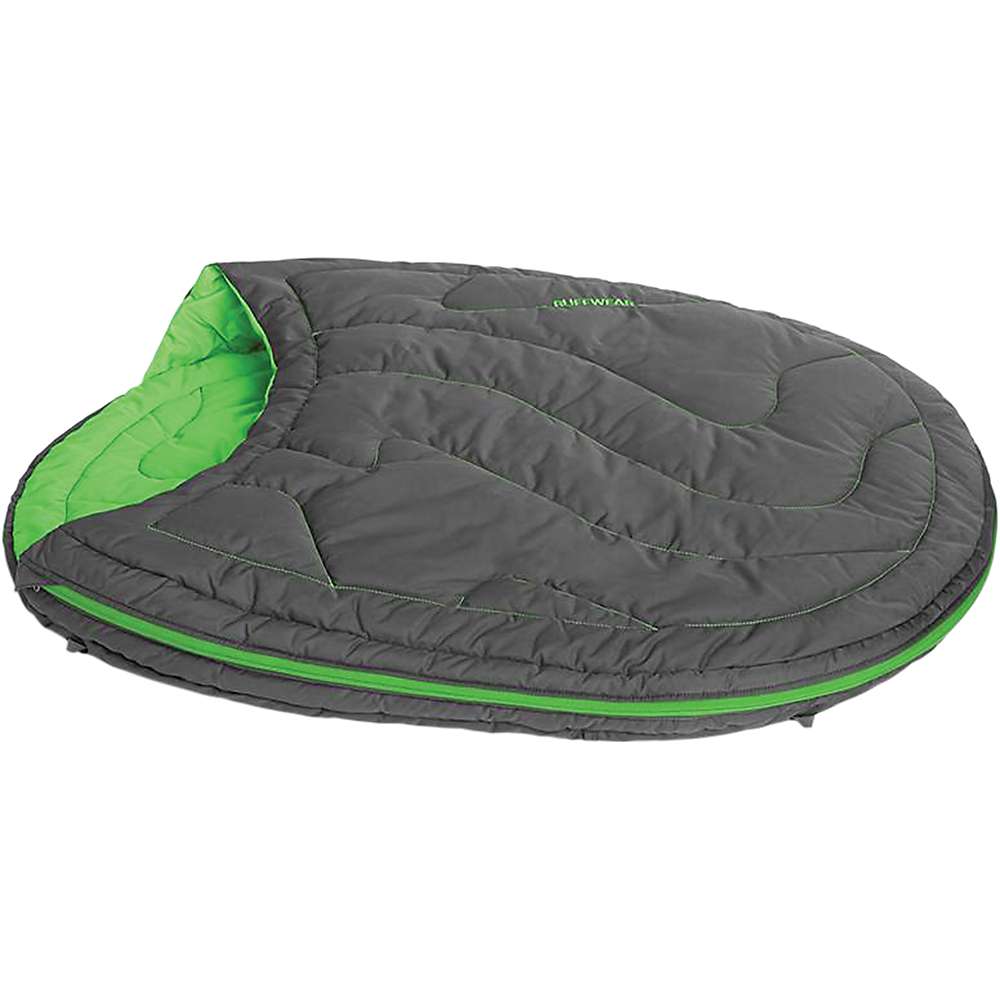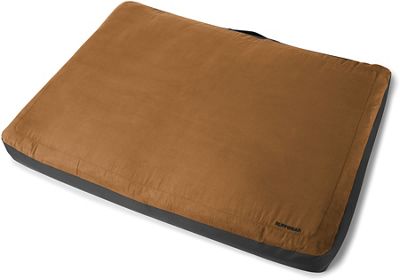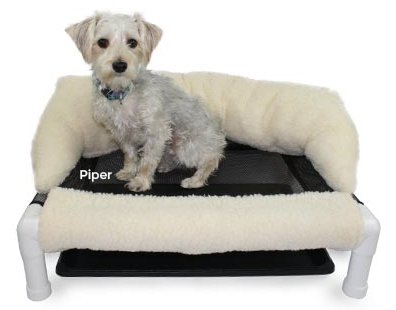Malamute Body Language 
Body language in Malamutes is probably closer to wolves than most dog breeds. Smell, vocalizations and "ESP" are some of the ways Malamutes communicate. The communication method dogs use that has been most studied, however, is body language. Unfortunately, many dogs have lost this valuable way of communicating with each other. Their conversational ability has been reduced to "ME GO WALK" rather than "I'd like to go for a walk with you in the park and hunt bunnies" - which is the rich tone and complexity you'll get in a Malamute conversation - if you take the time to understand it. You'll often see small dogs barking for no reason (not because of alarm) and large dogs walking around without a clue. Malamutes in general have retained the complex communication of the wolf with a few nuances.
To really read dog body language takes experience, particularly in a larger pack. Watching one dog is not all that helpful as they are responding to YOU, not another dog. The best way to learn is Malamute-Malamute communication which is even more complex than say Malamute-Labrador communication. Sadly, the labrador is not a good conversationalist when compared to the Malamute, because that aspect of his "dogness" has been bred out of him. A dog park is an excellent venue for studying general dog body language. Watch ears, tails, eyes, lips, hair, overall posture separately. With Malamutes, eyes and ears are particularly revealing.
Confidence/Fear
A Malamute in general, is a very confident dog (or should be). It was necessary as a sled dog to take control of situations that were life and death in the arctic. I explain to people who seem concerned that their Malamutes are "not listening" that there is a reason for this. If your life depended on this dog (like it would in the arctic) and perhaps you were considering traveling over some thin ice you didn't know was thin - would you want the dog to listen to you and go forward? or be confident in his instincts and take the initiative and stop or go another direction? Malamutes need confidence to disobey. It's an important characteristic. An insecure dog is going to listen and take you over that thin ice and you'll both be dead. Dead dogs don't breed. That's natural selection at work. You should never fault confidence. Signs of confidence: erect stance (standing tall), tail up, tail wagging in a slower sweep, ears pricked up or relaxed, direct look, relaxed, smaller pupils. This is one reason Malamutes are not always received well by other dominant dogs. Their up turned tail can be taken as a sign of aggression by another dog that is less skilled in the language of dogs.
Signs of worry and fear are the opposite: lowered stance, tail down or tucked under, tail wagging in a quick, frantic buzz, looking away or turning head away to look so that whites of eyes show, dilated pupils and ears back. Dogs often bark out of fear when cornered, fenced in, or on a leash. I can always tell Jazzy is unsure because she folds her ear in a strange way. You need to know your dog and it's own particular communication. In many ways, you have more to fear (meaning fights and aggression) from a shy or less confident dog. Confident dogs rarely need to fight to make their point to another dog.
Dogs that are aroused will often have the hair on their shoulders stand on end (the 'hackles'). This doesn't necessarily mean aggression, just that they are tense which MAY lead to aggression or fear - it's a precursor to the fight/flight response we all have.. Always diffuse a situation where a Mal gets her hackles up, it's usually a warning that she is not happy with the situation and may decided to "correct" a young upstart or equal in the pack. Once she realizes everything is ok, the hackles go down.
Dominance/Submission
Malamutes naturally stand in a dominant body posture when greeting strange dogs. These include standing tall and "puffing up" (trying to look bigger), standing over another dog, standing tall, putting his chin or paw over another dog's shoulders, calmly accepting other dogs licking at their lips, staring. A confident, dominant Malamute will sometimes roll on his back exposing a belly when he feels secure - as among friends. He will not do this if he's not among other dogs or people he is comfortable with. It can also be an invitation by a mother or auntie to a puppy to play. Alpha males will usually not do this, but will allow the puppies to climb all over them and chew on their feet and ears. Mounting ("humping") another dog is a sign of dominance, but it can be a sign of play between lower ranking, equal dogs. Often sort of a "tag, you're it!".
High-ranking Malamutes seldom demonstrate their rank, unless they lack confidence. Almost all fights and demonstrations of rank are done by the middle-ranking, low ranking or less confident pack members. A confident, secure alpha KNOWS he's alpha and doesn't have to display it to anyone. He will sit on the porch and watch over the other pack members while they play. He may play a little, but almost always stops before it gets too rough and tumble. Rough and tumble play is one way Malamutes work out their pack order in a friendly and non-aggressive way. Submissive body postures: lowered head and body, allowing other dogs to stand over them or climb over their shoulders, looking away when stared at, licking at a higher ranked dogs' lips and mouth, licking eyes, rolling on back and craning head away from other dog. Some dogs appear to mount higher-ranking dog in an attempt to find their place in a group with more than 2 or 3 dogs. If the higher ranking dog is confident that's not a problem, but if he isn't - it can lead to fights. Humping a HUMAN is something you should ALWAYS discourage - it's saying I'm your boss. Never let a dog do this to children as it can eventually lead to aggression toward the child, and even adults.
Play and Play Invitations
Since dog-dog play is just a friendly version of fighting, hunting and reproducing, dogs use rituals to demonstrate their intentions as peaceful and fun-loving. Dog play is often initiated by a low ranking dog. Sometimes the same dog in a pack is always the instigator of play. Mocha fills this role most often at our house, and while others occasionally start play, Mocha even makes "toys" to get the other dogs to play. She'll find a stick, chew it to the desired length, and then wave it at another dog to try to initiate play. (who says dogs don't use "tools"?) While Malamutes do use play bows, more often than not they will use what I call "the look" which is much more subtle. We've noticed other breeds do not always pick up on these subtle invitations and require something more obvious. A play bow is what most breeds use as an invitation to play. The dog's tail and butt is in the air, and the front legs are lowered. The dog's ears are up and forward, his mouth is open and relaxed, and his eyes are relaxed. While Malamutes use this occasionally, it's just one phrase in their huge vocabulary of "let's play" words. They will use other methods as well. Besides "the look", there is the steal it and run invitation, the jump on you to annoy you into chasing me, the zoom past because I'm faster and want you to chase me, the body slam drive-by, the hide and ambush, the pretend you see something and get everyone to run for it, the start from a dead stop take off chase, and more. We've also noticed there seems to be some kind of "status" in being "fast". Holly thinks it's pretty cool she can still outrun the puppies. Once they can outrun her, she stops playing with them - a way of maintaining her alpha status.
When dogs play very roughly, and ALL Malamutes play rough, it can seem quite intense to the untrained eye. I've had people ask "are they fighting?"...heck no, and you'd know it if they were - it would be terrifying! Malamutes play is always extremely rough: body slams, jumping, rolling someone over, pretend biting, tail pulling, and pinning (with everyone helping pin the "victim". Uninitiated Malamute watchers are sure someone is going to get killed or at least a few broken ribs! Be sure to supervise if there are non-Malamutes or older or younger dogs in the group that could be hurt. The key is you don't hear any guttural growling and the dog on the bottom fighting back. Malamutes rarely bark in play. That is reserved for a threat alert. This is different than most breeds that DO bark when they play. They also never growl in play (not to be confused with gutteral "talking" which they sometimes do) - and you should never encourage games that encourage growling such as "tug". If there is growling, a fight will likely soon break out. It's not uncommon for a Malamute to be so obnoxious in play that he gets the dander of his playmate up and a fight ensues. Usually those fights are mild in comparison to a "real" fight, but they have caused small punctures in muzzles or legs. The problem is that a small fight can escalate quickly into a deadly one. ALWAYS stop and correct any aggressive behavior the minute it starts.
Stress/Calm Signals
Dogs can feel stressed in situations of frustration or fear (such as when a dog they do not like is on the other side of a fence, they may attack their pack members in frustration). Some signs of stress include ears back, tail down, body lowered, sweating through paw pads (how did they determine this?), crazed look in the eyes, panting, licking, pupils dilated, rapid panting with corner of mouth pulled back, looking away or turning the head away.
Dogs, as pack animals, have highly-developed ways of avoiding and diffusing conflict and aggression - IF WE LET THEM. Often humans will add to the conflict and aggression by pulling the dog away with tense leash, tensing up, or yelling. If left to their own devices in a natural environment, dogs use calming signals to diffuse tension: Yawning, looking away, lip-licking, moving slowly, circling, sniffing the ground, acting disinterested, sitting or lying down. This includes "appeasement display" behaviors that are developed to turn away aggression and threats of aggression - "the guilty look" that dogs may appear to be giving when scolded for doing something is one example of this - it doesn't actually mean he's "guilty". Rolling on their backs. Lying on one side with a leg straight out. Unfortunately, these don't always work with two Malamutes that dislike one another. There seems to be a point of "no return" where calming signals do not work. Once two dogs dislike one another, only intense training on your part (with the help of a dog behaviorist), intense supervision and unsupervised separation are likely to improve the situation. The key with Malamutes is to keep dogs likely to dislike one another together as much as possible and supervised. This would likely be two females, two males, siblings or a very young/very old dog. Keeping them together allows them to work out their "pack order" under your supervision. However, if a serious fight erupts that cannot be stopped without physical intervention, it's probably moving past the point of no return. The dogs will need to be separated from that point forward. One technique with dogs beginning to show aggression to one another is to put basket muzzles on both dogs while they work out their differences which may or may not work, but is worth a try.
Aggression
A soft, quiet growl is often just a warning to another dog. It may be nothing to worry about. It's important to listen to the tone. There is an edge to a more serious growl. Sometimes the most vicious attacks are precipitated by no sound at all - it seems instantaneous. Visible signs of aggression include: Stiff legs and body, deep growls, lowered head, ears back close to the head, a "puffing up" of the coat, eyes narrow and fixed intently, lips sometimes drawn back in a snarl, "hackles" (hair along back, especially over the shoulders and rump) up and erect, tail straight out, and intense stares (pupils may be fully dilated or shut!), and surprisingly TAIL WAGGING (or what appears to be - but is usually stiffer than the usual relaxed tail wag). Ideally you need to pick up on aggressive signals before they are truly apparent to the passer-by. Shadow used to wag his tail, and the only sign you had that he was stressed and might attack was the look in his eyes, easily missed. Always watch the eyes!!!
Other Communication
It's obvious dog language goes beyond smell, posture and verbal howls, barks and growls. If he depended ONLY on smell, the rabbit would smell like dinner - but this is apparently not the case! They seem to be using a sort of "ESP" to communicate as well. This is apparently how Riggs communicates with Stephanie's bunny. Whereas the bunny does not like the other dogs, it likes Riggs and will hop over to where he is. They seem to be "talking" without words. Somehow the bunny knows who Riggs is, and trusts him which by all intents and purposes, he should not. I've had dogs come up and quietly look at me - and somehow I know what they want without any physical movements. How do you account for that? I call it doggy ESP.
I have no doubt dogs "love". There is some kind of loving gesture that has to do with eyes. Jazzy, but never Mula will clean Rigg's eyes. This seems to be a sign of affection. First she will smell them, then clean them. Mocha, Jazzy's daughter has started doing this too. Jazzy has a special bond with Riggs, and while Mula and he get along, they are not as close so she never does the eye-licking thing. Mother dogs also lick their puppies eyes which also seems to be a sign of affection.
A paw on the lap (or climbing in your lap) is soliciting behavior - something akin to puppies licking at their mother's mouth for food. Mocha does this often, Penny used to do it. It means: I want something.
Huffing or heavy breathing, panting, pacing, "pestering" is a sign of stress. Riggs will do this when he needs to go outside to potty or feels stressed for any number of other reasons.









